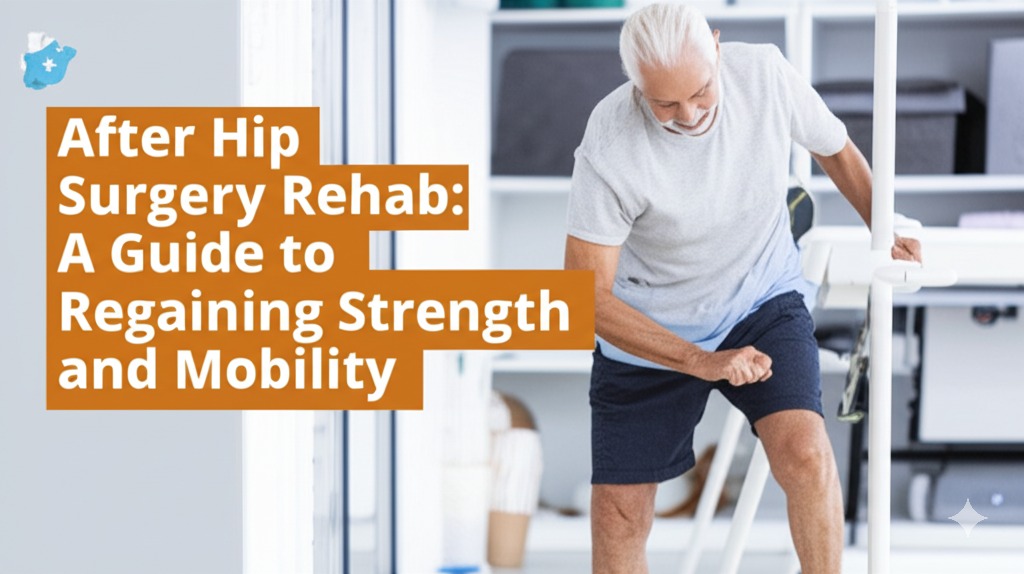Undergoing hip surgery can be a life-changing experience, but with the right rehabilitation plan, you can recover and return to your everyday activities stronger than before. Whether you’ve had a hip replacement, hip arthroscopy, or another type of hip surgery, post-surgery rehab is essential for regaining mobility and strength. This guide will walk you through the key aspects of hip surgery rehabilitation and offer tips to help you make a smooth recovery.
Why Rehabilitation is Crucial After Hip Surgery
After undergoing hip surgery, your body needs time and effort to heal. Rehabilitation (rehab) focuses on helping you regain your mobility, strength, and flexibility. Without proper rehab, you risk complications such as stiffness, weakness, and difficulty walking. Rehab is not only about physical recovery but also emotional support, as it can help you regain confidence in your body’s abilities.
The Benefits of Post-Surgery Rehab
- Improved Mobility: Rehab exercises help restore the range of motion in your hip joint.
- Pain Relief: Consistent therapy can reduce post-surgical pain and discomfort.
- Strength Building: Strengthening muscles around the hip joint helps provide stability and prevents future injuries.
- Emotional Support: Physical therapy often includes encouragement and motivation, which can be essential for your mental well-being during recovery.
Phases of Hip Surgery Rehabilitation
Rehabilitation after hip surgery is typically divided into several phases. Each phase is designed to gradually improve your strength, mobility, and functionality.
Phase 1: Early Recovery (0-2 Weeks)
In the first few weeks after surgery, the primary goal is to reduce swelling and pain while gradually reintroducing gentle movement. This phase focuses on resting the joint, using crutches or a walker to avoid weight-bearing on the affected leg, and performing light stretching exercises.
Key Focus Areas:
- Pain Management: Ice packs, medications, and rest to reduce inflammation.
- Gentle Movements: Basic exercises like ankle pumps and knee extensions to keep blood circulating.
- Weight-Bearing Restrictions: Avoid placing weight on the operated leg to protect the healing joint.
Phase 2: Building Strength and Mobility (2-6 Weeks)
As you move into the second phase, the focus shifts to strengthening the muscles around the hip joint. At this stage, you may begin using resistance bands or light weights in physical therapy sessions. You’ll also start to increase your range of motion with stretching and more dynamic movements.
Key Focus Areas:
- Strengthening Exercises: Focus on the glutes, quadriceps, hamstrings, and hip flexors.
- Walking Practice: Gradually work on walking without assistive devices while ensuring proper form.
- Mobility Work: Perform exercises to improve flexibility and joint mobility.
Phase 3: Advanced Strengthening and Functional Training (6-12 Weeks)
During the final phase of rehab, your goal is to return to more normal activities, including walking, climbing stairs, and eventually light jogging. This phase will help you regain the full range of motion and function in your hip joint.
Key Focus Areas:
- Weight-Bearing Exercises: Progress to standing exercises and light resistance training.
- Cardio Exercises: Cycling or swimming can be great low-impact ways to build endurance.
- Functional Training: Reintroduce everyday movements like bending, twisting, and lifting.
Tips for Successful Hip Surgery Rehab
To make the most out of your rehab process, here are a few tips that can accelerate your recovery:
1. Stick to Your Rehab Plan
Consistency is key. Make sure to attend all your physical therapy sessions and do your exercises at home as prescribed by your therapist. Even on days when you don’t feel like it, maintaining your routine is essential.
2. Listen to Your Body
While it’s important to push yourself, it’s equally vital to know your limits. If you feel sharp pain or discomfort during an exercise, stop and inform your therapist. Overexerting yourself can delay healing.
3. Maintain a Healthy Diet
Eating nutritious foods can help speed up the healing process. Focus on foods rich in protein, vitamins, and minerals, especially calcium and vitamin D, which are essential for bone health.
4. Stay Positive
The recovery process can be slow, and you may face days of frustration. Stay positive and celebrate small milestones along the way. Mental resilience plays a significant role in physical recovery.
Common Mistakes to Avoid During Rehab
While rehab is essential, there are some mistakes you should avoid to ensure optimal recovery:
- Neglecting Rehab Exercises: Skipping exercises can lead to muscle weakness and slow down your progress.
- Overdoing It Too Soon: Pushing your body too hard in the early stages can result in setbacks or injury.
- Skipping Follow-Up Appointments: Regular check-ins with your surgeon or therapist are important for tracking progress and adjusting your rehab plan.
Conclusion: The Path to Full Recovery
Rehab after hip surgery is a journey that requires patience, consistency, and determination. By following a structured rehabilitation plan, listening to your body, and making smart lifestyle choices, you’ll gradually regain your strength and mobility. Remember, the path to recovery may take time, but every step brings you closer to living a full and active life again.

Kallie Snyder is an author at Stonegate Health Rehab, providing valuable insights, recovery guidance, and rehab resources to help individuals achieve better health and well-being.
